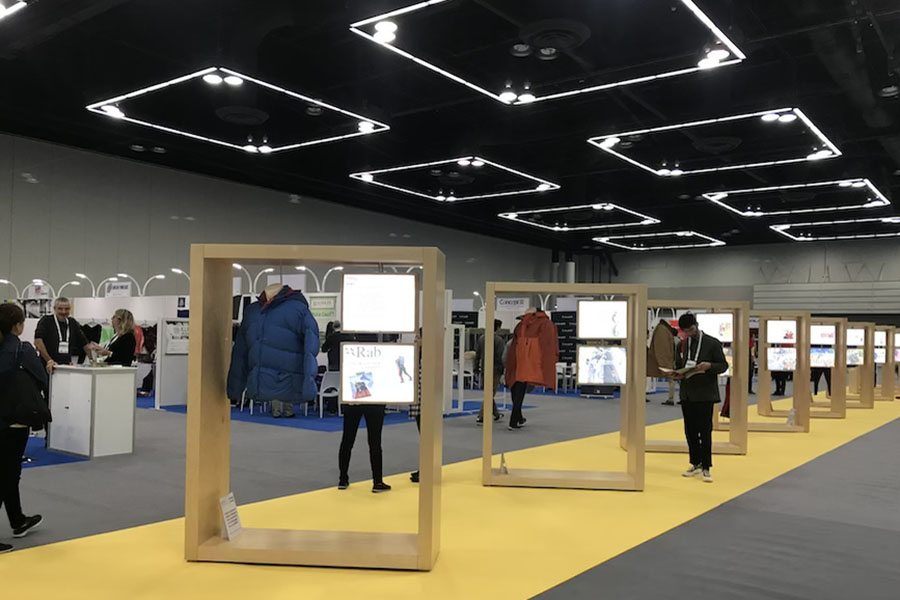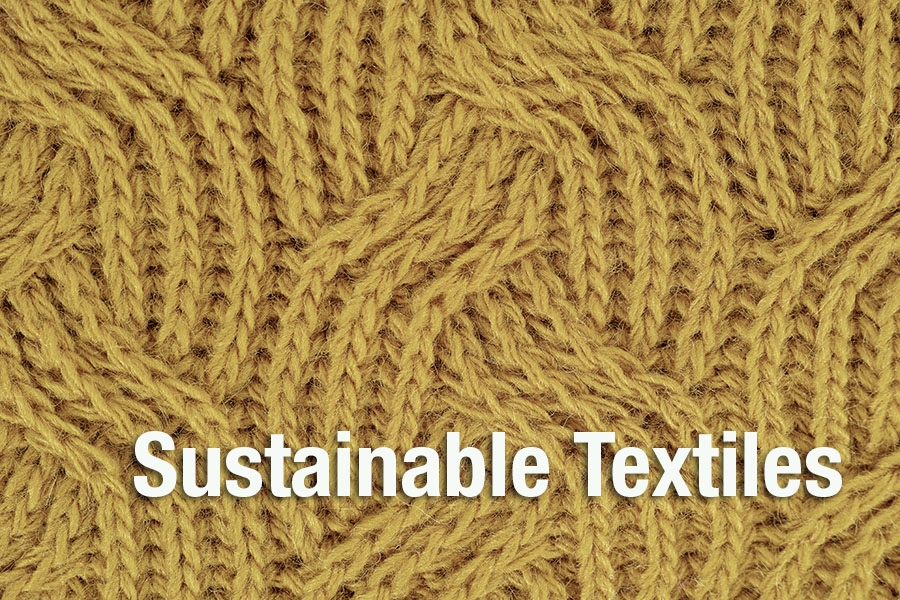A trio of textile businesses woos outdoor-apparel brands with a new clothing line made from recycled wood.
Sponsors of a new textile trade show, the Functional Fabric Fair, which opened for the first time in Portland last month, were excited to showcase their state-of-the-art performance gear in the heart of the outdoor-apparel sector.
One of the convention’s sponsors, textile industry veteran David Parkes, was hoping to make a particularly big splash at the fair with the launch of a new outdoor-clothing line, the TREE CLIMATE collection.
The new line consists of jerseys, sweaters, shirts and other outdoor wear, which are made from fabrics developed by Lenzing, an Austrian manufacturer of textile fibers made from recycled wood products.
One of the fabric maker’s new products introduced at the convention is made up of one-third cotton scraps from garment production mixed with wood pulp, which the company touts as one of the most sustainable fibers on the market today. Some of the garments in the TREE CLIMATE line are made from this new fabric.
Parkes hopes outdoor brands in the Northwest, such as Patagonia and Icebreaker, will take to the new outdoor gear because the fabric is the most “sustainable fiber made by man,” says Parkes, founder of New Jersey textile marketing company Concept III.
As in many sectors, sustainability is a buzzword that drives future business strategy. The garment industry is no exception. But it still has a long way to go in transforming manufacturing processes.
Textile production globally is the second most-polluting sector. Textile mills generate one-fifth of the world’s water pollution and use thousands of chemicals, some of them toxic, to make clothes, according to the environmental group Natural Resources Defense Council.
In addition, poor working conditions of garment factory workers and the wastefulness of the recent rise in fast fashion have given the sector a bad reputation for sustainability.
 Portland’s first Functional Fabric Fair took place at the Oregon Convention Center in October
Portland’s first Functional Fabric Fair took place at the Oregon Convention Center in October
In the ’90s, outdoor brands embraced the manufacture of recycled polyester made from plastic soda bottles as a way to bolster their sustainability credentials. Large outdoor brands, such as Patagonia, recycle used plastic bottles and worn-out garments to make shell jackets and fleeces.
But industry experts are now calling out the practice as being unsustainable.
“There are a lot of negatives in recycling plastic to make polyester,” says Parkes. “It takes a lot of energy to recycle bottles. There are a lot of dirty bottles and contamination, which requires chemicals to process bottles into polyester,” he says.
The use of recycled plastic to create polyester also keeps up the demand for plastic bottles. Many experts say manufacturers should be moving away from the material as much as possible.
Another compelling argument for using recycled wood products to make garments: economic development in rural Oregon.
Textile industry veteran Doug Hoschek, owner of Portland Woolen Mills, wants to spread the word about the opportunities to create a market for wood products by marketing clothes that use recycled wood from the thinning of Oregon’s state forests, a move that he points out also reduces wildfire risk.
RELATED STORY: Spinning a Yarn
Hoschek is a consultant on the TREE CLIMATE brand.
It sounds like an innovative idea — to make garments using locally sourced wood — but the technology for different types of wood to make clothes is not quite there yet.
Lenzing sources most of the wood it uses to manufacture fibers for textiles from eucalyptus trees that grow in South Africa. The wood does not require chemicals to be purified. Other types of wood would need more processing to make into fibers for textiles.
Andreas Gurtler, head of global business management at Lenzing, says the company is researching other tree species it can use in fabric manufacturing, particularly trees that can be sourced locally to reduce greenhouse-gas emissions in the supply chain.
For now, eucalyptus trees from South Africa remain the most viable species for fabric manufacturing.
Hoschek is unperturbed that the technology isn’t there yet for locally sourced wood.
“What I learned from polyester is that if you create demand, someone will figure out how to do it,” he says.
To subscribe to Oregon Business, click here.






